- About
- News
- Faculty
-
Academics
- School of Physical Science and Technology (SPST)
- School of Life Science and Technology (SLST)
- School of Information Science and Technology (SIST)
- School of Entrepreneurship and Management (SEM)
- School of Creativity and Art (SCA)
- Institute of Humanities (IH)
- School of Biomedical Engineering (BME)
- Shanghai Institute for Advanced Immunochemical Studies (SIAIS)
- iHuman Institute
- Institute of Mathematical Sciences (IMS)
- Center for Transformative Science (CTS)
- Institute of Carbon Neutrality (ICN)
- Shanghai Clinical Research and Trial Center
- Tech Transfer
- Global
- Campus Life
-
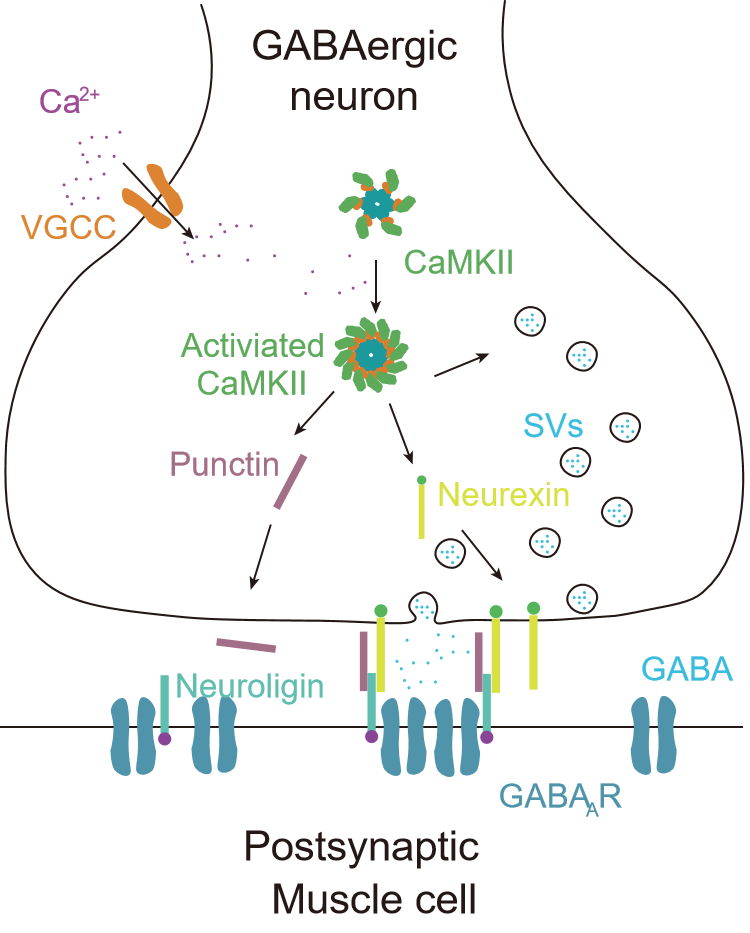 Synapse is the contact between neurons where information passes through. According to the types of information, there are excitatory and inhibitory synapses, and the inhibitory synaptic transmission plays a pivotal role in maintaining the excitatory and inhibitory balance. Disturbance of inhibitory synaptic transmission has been reported relevant to many neurodevelopmental and psychiatric disorder...
Synapse is the contact between neurons where information passes through. According to the types of information, there are excitatory and inhibitory synapses, and the inhibitory synaptic transmission plays a pivotal role in maintaining the excitatory and inhibitory balance. Disturbance of inhibitory synaptic transmission has been reported relevant to many neurodevelopmental and psychiatric disorder... -
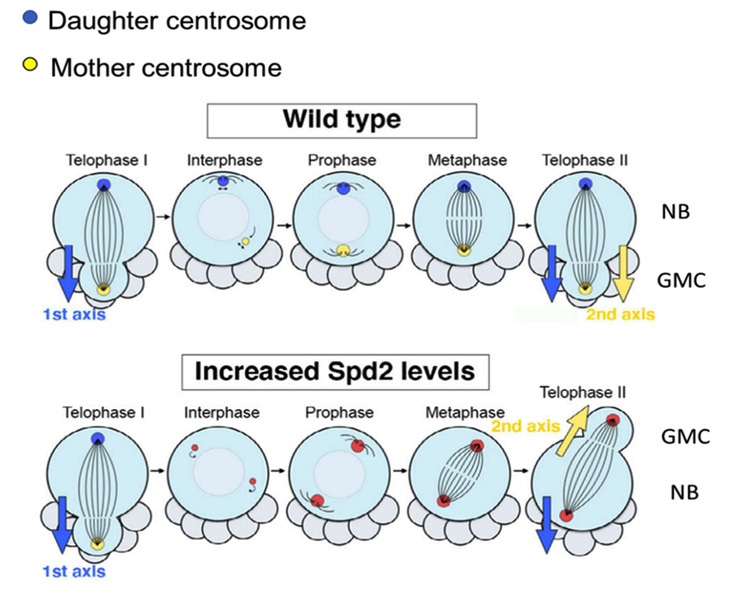 In multicellular organisms, the centrosome plays a critical role in development and tissue homeostasis. In various early embryos and stem cells, the centrosome regulates their polarized or asymmetric cell division. Centrosome dysfunction is linked to various diseases including cancer, microcephaly and ciliopathy. APC/C (Anaphase-Promotion Complex/cyclosome) is an evolutionarily conserved ubiquitin...
In multicellular organisms, the centrosome plays a critical role in development and tissue homeostasis. In various early embryos and stem cells, the centrosome regulates their polarized or asymmetric cell division. Centrosome dysfunction is linked to various diseases including cancer, microcephaly and ciliopathy. APC/C (Anaphase-Promotion Complex/cyclosome) is an evolutionarily conserved ubiquitin... -
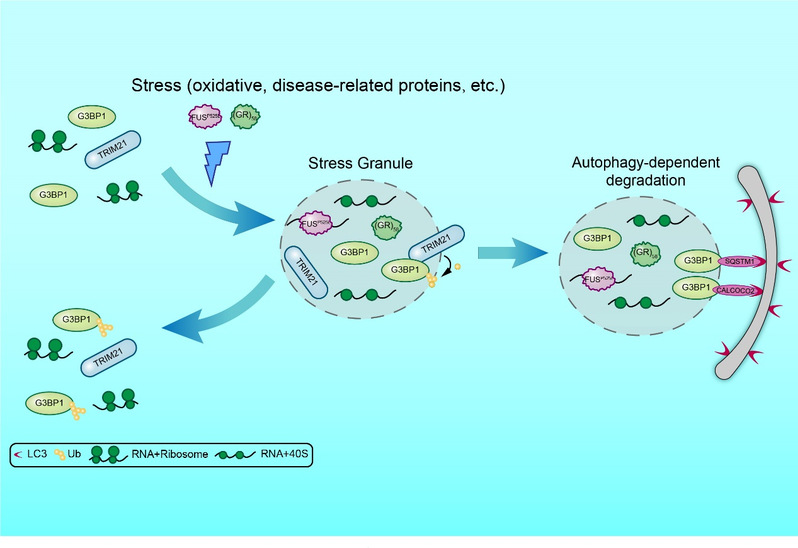 Stress granules are membraneless condensates of RNA and RNA-binding proteins formed in response to cell stress. New evidence of the relationship between stress granules and neurodegenerative diseases highlights their physiological importance. Therefore, understanding the mechanism of this association and determining the key players that control stress granule homeostasis are crucial to t...
Stress granules are membraneless condensates of RNA and RNA-binding proteins formed in response to cell stress. New evidence of the relationship between stress granules and neurodegenerative diseases highlights their physiological importance. Therefore, understanding the mechanism of this association and determining the key players that control stress granule homeostasis are crucial to t... -
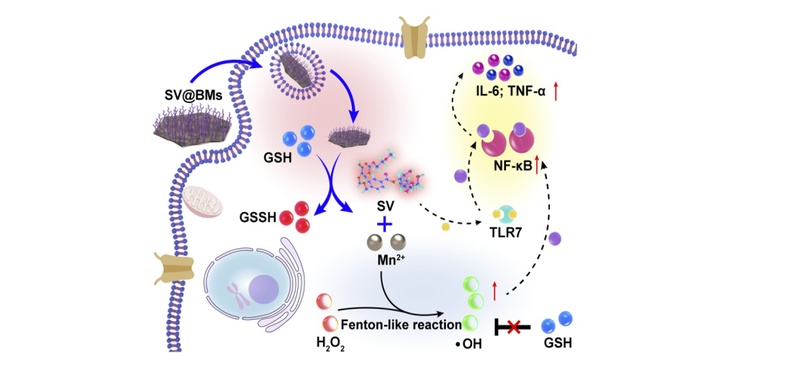 Osteosarcoma is the most common primary malignant tumor of bone, mostly seen in children and adolescents. Comprehensive treatment options for osteosarcoma have not evolved significantly in the last 30 years, and there is an urgent need to explore new therapies. Osteosarcoma is highly malignant, prone to metastasis, and has a poor prognosis. Traditional standard treatment of osteosarcoma relie...
Osteosarcoma is the most common primary malignant tumor of bone, mostly seen in children and adolescents. Comprehensive treatment options for osteosarcoma have not evolved significantly in the last 30 years, and there is an urgent need to explore new therapies. Osteosarcoma is highly malignant, prone to metastasis, and has a poor prognosis. Traditional standard treatment of osteosarcoma relie... -
 In November, Life Dean's Lecture of ShanghaiTech came again as scheduled. The Life Dean's Lecture is a special edition of the SLST Seminar held once a year, where distinguished experts in life sciences are invited to share the frontier scientific advances with faculty and students. This year, James Rothman, winner of the 2013 Nobel Prize in Physiology or Medicine and Distinguished Adjunct ...
In November, Life Dean's Lecture of ShanghaiTech came again as scheduled. The Life Dean's Lecture is a special edition of the SLST Seminar held once a year, where distinguished experts in life sciences are invited to share the frontier scientific advances with faculty and students. This year, James Rothman, winner of the 2013 Nobel Prize in Physiology or Medicine and Distinguished Adjunct ... -
 As an important small molecule metabolite, NAD+ is widely involved in a series of biochemical reactions in cell energy metabolism, such as glycolysis, oxidative phosphorylation, and fatty acid oxidation. Tumor cells proliferate faster and are prone to DNA damage, requiring more NAD+ consumption. NAMPT is a key rate-limiting enzyme for NAD+ synthesis. Aberrant overexpression of NAMPT...
As an important small molecule metabolite, NAD+ is widely involved in a series of biochemical reactions in cell energy metabolism, such as glycolysis, oxidative phosphorylation, and fatty acid oxidation. Tumor cells proliferate faster and are prone to DNA damage, requiring more NAD+ consumption. NAMPT is a key rate-limiting enzyme for NAD+ synthesis. Aberrant overexpression of NAMPT... -
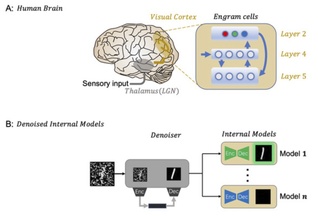 The great advances in deep learning techniques bring us a large number of sophisticated models that approach human-level performance in tasks such as image classification, speech recognition, and natural language processing. Despite its success, deep neural network (DNN) models are still vulnerable to adversarial attacks. Even with adding human-unrecognizable perturbations, the predictions of the ...
The great advances in deep learning techniques bring us a large number of sophisticated models that approach human-level performance in tasks such as image classification, speech recognition, and natural language processing. Despite its success, deep neural network (DNN) models are still vulnerable to adversarial attacks. Even with adding human-unrecognizable perturbations, the predictions of the ... -
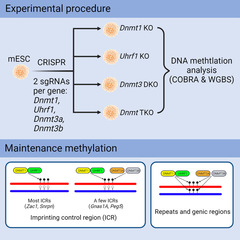 A new study has been reported by the laboratory of Associate Professor Li Xiajun at SLST, ShanghaiTech, to elucidate maintenance of DNA methylation in embryonic stem cells. This paper entitled “DNA methyltransferases are complementary in maintaining DNA methylation in embryonic stem cells” is published in iScience, a Cell press journal, on September 16, 2022. DNA methylation is th...
A new study has been reported by the laboratory of Associate Professor Li Xiajun at SLST, ShanghaiTech, to elucidate maintenance of DNA methylation in embryonic stem cells. This paper entitled “DNA methyltransferases are complementary in maintaining DNA methylation in embryonic stem cells” is published in iScience, a Cell press journal, on September 16, 2022. DNA methylation is th... -
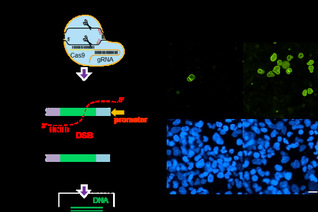 In recent years, the development and application of gene editing technology mediated by CRISPR/Cas9 (clustered regularly interspaced short palindromic repeats-associated peptide 9) and its derivatives has attracted worldwide attention. A variety of gene editing tools relying on the homologous recombination (HR) pathway have been able to achieve precise DNA insertion or gene deletion, which not onl...
In recent years, the development and application of gene editing technology mediated by CRISPR/Cas9 (clustered regularly interspaced short palindromic repeats-associated peptide 9) and its derivatives has attracted worldwide attention. A variety of gene editing tools relying on the homologous recombination (HR) pathway have been able to achieve precise DNA insertion or gene deletion, which not onl... -
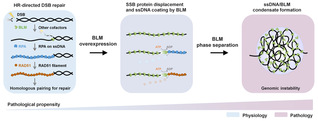 Recently, the research team led by SLST Associate Professor Sun Bo, in collaboration with the team led by Professor Liu Cong from the Interdisciplinary Research Center on Biology and Chemistry, CAS, have jointly published a research result in Angewandte Chemie International Edition, which reveals a novel interaction model between bloom syndrome helicase (BLM) and single-stranded DNA (ssDNA). ...
Recently, the research team led by SLST Associate Professor Sun Bo, in collaboration with the team led by Professor Liu Cong from the Interdisciplinary Research Center on Biology and Chemistry, CAS, have jointly published a research result in Angewandte Chemie International Edition, which reveals a novel interaction model between bloom syndrome helicase (BLM) and single-stranded DNA (ssDNA). ... -
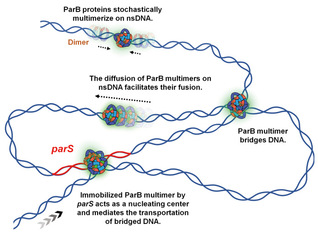 Chromosome segregation is critical to ensure that a complete copy of the parent's genetic information is passed on to each daughter cell. In most bacteria and plasmids, the correct segregation of chromosomes relies on the ParABS system, which consists of the ATPase protein ParA, the DNA-binding protein ParB and its target sequence parS. The formation of the ParB-DNA nucleoprotein complex ...
Chromosome segregation is critical to ensure that a complete copy of the parent's genetic information is passed on to each daughter cell. In most bacteria and plasmids, the correct segregation of chromosomes relies on the ParABS system, which consists of the ATPase protein ParA, the DNA-binding protein ParB and its target sequence parS. The formation of the ParB-DNA nucleoprotein complex ... -
 The sequence of the human genome is currently well-known, but the functions of the 20,000 protein-coding genes in over 500 types of cells remain unsolved, which severely hampers disease diagnosis and treatment. To systematically decipher the functions of all the genes in all the cells, one needs to inactivate (perturb) these genes and characterize the resulting cellular phenotypes, namely to map t...
The sequence of the human genome is currently well-known, but the functions of the 20,000 protein-coding genes in over 500 types of cells remain unsolved, which severely hampers disease diagnosis and treatment. To systematically decipher the functions of all the genes in all the cells, one needs to inactivate (perturb) these genes and characterize the resulting cellular phenotypes, namely to map t... -
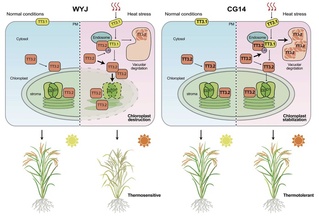 As the global warming trend inevitably intensifies, and extreme high temperature become more and more frequent around the world, high temperatures become one of the most threatening factors in the challenge of global food security. Temperature is a complex physical phenomenon. When plants face changes in environmental temperature, they must transduce this physical signal into a biologic...
As the global warming trend inevitably intensifies, and extreme high temperature become more and more frequent around the world, high temperatures become one of the most threatening factors in the challenge of global food security. Temperature is a complex physical phenomenon. When plants face changes in environmental temperature, they must transduce this physical signal into a biologic... -
 Recently, the research team led by SLST Associate Professor Sun Bo published a research article in PNAS entitled “The convergence of head-on DNA unwinding forks induces helicase oligomerization and activity transition”, revealing a novel activity transition pathway of a DNA-repair-involved helicase.Helicases are ubiquitous molecular motors found in all organisms from phages t...
Recently, the research team led by SLST Associate Professor Sun Bo published a research article in PNAS entitled “The convergence of head-on DNA unwinding forks induces helicase oligomerization and activity transition”, revealing a novel activity transition pathway of a DNA-repair-involved helicase.Helicases are ubiquitous molecular motors found in all organisms from phages t...
- per page 14 records total 112 records
- firstpage <<previouspage nextpage>> endpage
- PageNumber 3/8 jumpto

